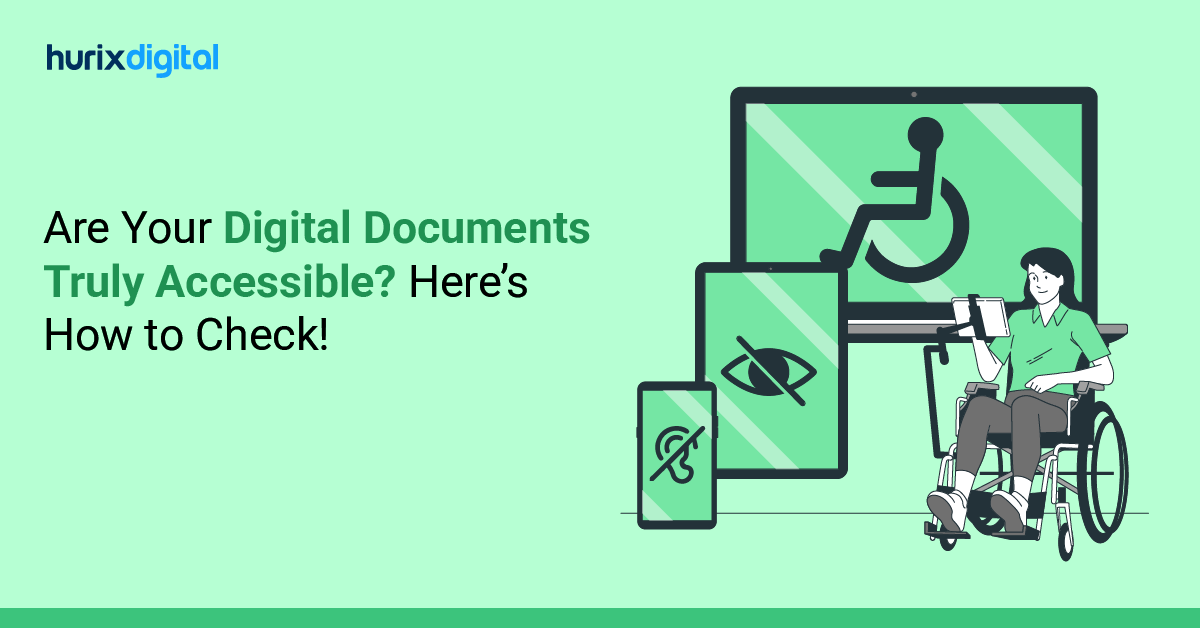
The Importance Of Accessibility Consulting
Accessibility is a concept that determines if a software product or service or a website can be used by everyone, including those with disabilities and those who use assistive technologies and devices like screen reader software, speech recognition software etc. Even though usability and accessibility seem similar, accessibility is distinctly differentiated by its full focus on people with disabilities.
In accessibility consulting, the level of accessibility of a company is measured against the accessibilities standards such as Section 508 and WCAG 2.0 and compliance services.
Ironically, even as a critical factor impacting design, many brands seem to overlook it. Interaction Design points to a 2011 World Health Organization report about disability which states that over 15% of Earth’s population suffers from some form of disability. Also, many jurisdictions, the E.U. for instance, penalize those who fail to create accessible designs. Accessibility design offers many benefits:
- Much improved search engine optimization from semantic HTML
- Widespread opportunities that reach many more users on more devices and in more environments
- A better public image for the company’s brand
There are accessibility laws to help people with disabilities. However, it is in the company’s best interest to incorporate into the design of the software or website usability by all potential users.
Accessibility Issues: Types
As Interaction Design points out, the common issues that ought to be considered with regards to the number and kinds of potential accessibility issues are:
- Visual impairment (e.g. colour blindness)
- Motor/mobility (e.g. use of wheelchair)
- Auditory
- Seizures
- Learning/ Cognitive
Ability issues that arise for users include
- Incidental (e.g. sleep deprivation)
- Environmental (e.g. using mobile devices underground)
Interestingly, accessibility consulting is very beneficial when compared with DIY accessibility checks which inevitably involve a learning curve. There are some key merits of engaging an accessibility consultant:
- Superior knowledge about accessibility: They possess in-depth knowledge about accessibility. Importantly, for them, accessibility is the main focus. They are already certified by the IAAP and possess extensive training in specific technical areas. With this kind of backing, they will work more efficiently and quickly than when compared to employees who do not have such training or knowledge.
- Firsthand knowledge and experience with disability: An accessibility consultant of repute typically has first-hand knowledge of people with disabilities or works with them as colleagues. This enables them to know how much people access the web or use software, using their assistive devices.
- Functional testing: DIY assessment of one’s own digital accessibility involves accessibility testing tools, which are software programs and online testing tools that look for certain attributes, such as alt text (captions of images for the visually challenged). Yet, these tools only look for certain, limited attributes. They cannot toggle and navigate web pages nor do other actions which can only be done by manual testers. An accessibility consultant on the other hand will do a combination of manual and automated and functional testing to ensure that it is free of issues every step of the way.
- An accessibility consultant makes judgement calls: Making judgement calls is a key part of checking a website’s accessibility or program accessibility. For instance, an automated tool might conclude that alternative text is in place for all images, but whether they are properly used is a call that only a consultant can make. Alt text ought to be implemented properly, depending on what the images convey: whether they are merely decorative in nature; whether they are multiple images that are part of a group or whether they are graphs and diagrams conveying a lot of data.
- Up-to-date knowledge: Digital accessibility is an area that is in a state of constant flux. Accessibility consultants stay atop the latest developments in the industry and are aware of the most up-to-date technical requirements for digital accessibility. New releases in assistive technology devices and software, and which of these are in the most widespread use – these are things that they make it a point to know. Most importantly, they possess knowledge about legislation such as Section 508 of the Rehabilitation Act – including recent updates such as version 2.1 of the Web Content Accessibility Guidelines, new requirements and compliance deadlines.
In accessibility consulting, first off, the accessibility services are in alignment with business strategy; the current state is assessed, accessibility issues and gaps are identified, and a roadmap is charted with the goal of establishing a full-fledged accessibility program with quantification benefits. The assessment phase includes the following steps: Risk review and gap analysis, mobile accessibility audit, legal compliance audit, web accessibility audit, and compatibility testing of assistive technology
After the assessment is done, remediation is carried out. In this step, the detailed recommendations of the assessment phase are implemented, transforming an inaccessible product to an accessible one-usable by all including those with disabilities.
The remediation measures include program management support, usability testing, assistive technology compatibility testing, document accessibility, QA testing, UAT accessibility testing, accessible website development and help desk support.
The final step is to integrate accessibility into the company to maintain continued accessibility compliance.
With this step, the ongoing accessibility requirements are met with and managed, risk mitigated and efficiency improved across the life cycle providing much-needed support to maintain, on an ongoing basis, web accessibility compliance testing with the ADA and Section 508.
Corporate accessibility policy development, VPAT update and certification of accessibility, disability community marketing, monitoring ongoing accessibility, and help desk support are some of the steps in the integration exercise conducted by Interactive Accessibility.
Final Word
In conclusion, whether accessibility compliance is carried out by means of DIY methods and tools in-house or by hiring a consultant, given the many jurisdictions that have made it compulsory for products and for services to be accessible, accessibility is here to stay and it is up to the company or organization to have accessibility included in their product and service design for maximum reach and benefits.

Vice President – Content Transformation at HurixDigital, based in Chennai. With nearly 20 years in digital content, he leads large-scale transformation and accessibility initiatives. A frequent presenter (e.g., London Book Fair 2025), Gokulnath drives AI-powered publishing solutions and inclusive content strategies for global clients







